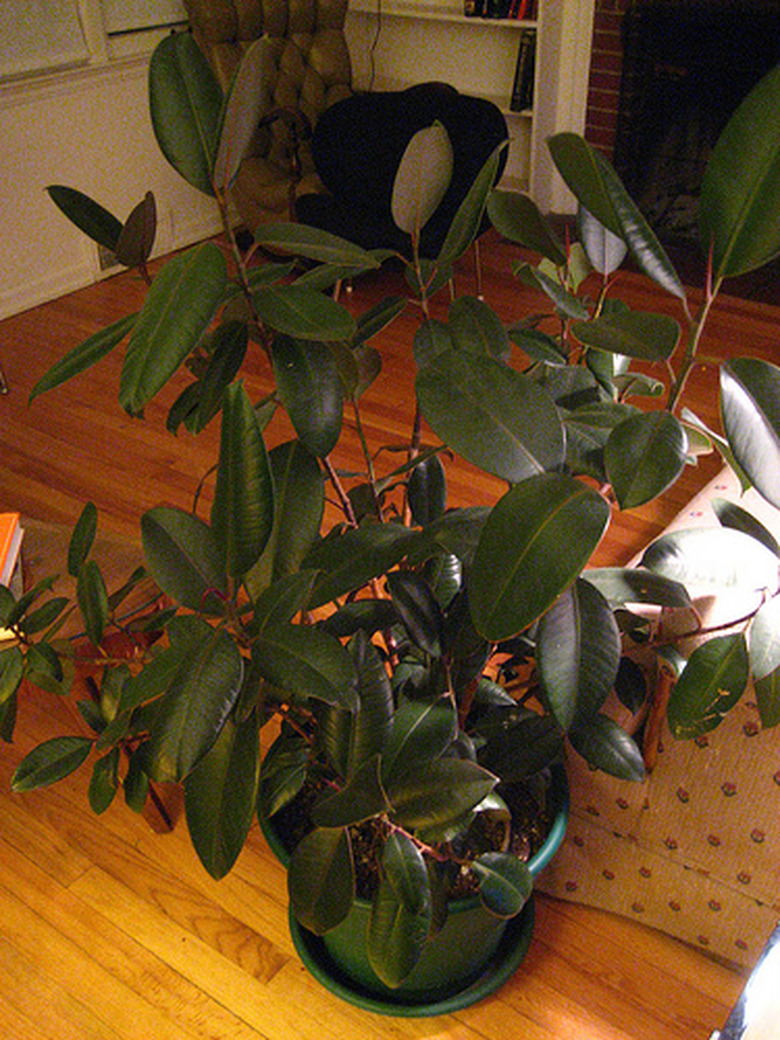How To Take Care Of An Indoor Rubber Plant
Things Needed
- Thermometer
- Spray bottle
- Cotton cloth
- Liquid fertilizer
- Planter
- Potting soil
- Pruning shears
Tip
Lack of water, cool temperatures and inadequate light will all cause an indoor rubber plant to shed leaves. However, the lower leaves naturally turn yellow and fall, and this does not indicate a problem.
The rubber plant is a member of the fig family, and is native to India. It can grow up to 130 feet tall in the wild, but will typically only grow to 5 or 6 feet as an indoor planter. It produces shiny, oval shaped leaves and inedible fruit in the form of a fig. An indoor rubber plant can be grown with very little care.
Step 1
Keep the temperature of the indoor rubber plant between 65 and 80 degrees F at all times. Place it in a window where it will receive between 4 and 6 hours of direct sunlight each day. A thermometer should be used to ensure the temperature is stable.
- The rubber plant is a member of the fig family, and is native to India.
Step 2
Water the rubber plant twice a week. Apply a generous amount of water to thoroughly soak the soil. Allow the soil to dry completely between watering. Reduce watering to once every 2 weeks during the winter, when the plant enters its dormant period.
Step 3
Use a spray bottle to mist the foliage once every week during the summer to help emulate the humidity of the rubber plant's natural environment. Wipe the leaves of the rubber plant with a damp cotton cloth every 2 weeks to provide needed moisture and give the leaves a shiny appearance.
Step 4
Feed the rubber plant using a liquid fertilizer once every 10 to 12 days. Follow the manufacturer's instructions for proper dosage and application. Do not fertilize during winter, as the nutrients will go to waste.
- Water the rubber plant twice a week.
- Feed the rubber plant using a liquid fertilizer once every 10 to 12 days.
Step 5
Transplant the rubber plant into a new pot once every 2 to 3 years. Choose a new planter that is several inches larger in diameter than the previous. Use a potting soil designed for cacti, as the high drainage is necessary.
Step 6
Prune rubber plants during the early spring, just before growth begins. Remove all dead and dying branches, as they will draw nutrients away from healthy portions of the plant. This will also provide more circulation to the inner boughs of the plant, reducing the chance of fungal diseases.
References
- Book: 37 Houseplants Even You Can't Kill; Mary Kate Hogan; 2007
